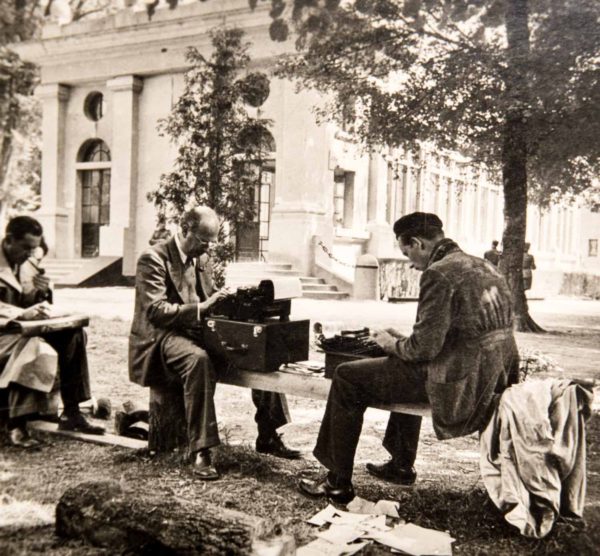From time to time, I’m asked how I come up with my blog topics. Well, I do read a lot of books as well as periodicals and they provide a majority of my “inspirations.” However, we are fortunate that many of our readers (domestic and international) of the bi-weekly blogs correspond with us and occasionally, they introduce me to previously unknown people, topics, or events (at least unknown to me). Today’s blog topic is courtesy of Pat P. and the brief subject of his e-mail. Pat is doing some research and had a question about whether a particular British bombing mission over Berlin in July 1942 ever took place. The bombs from this unconfirmed bombing mission supposedly destroyed a building at Giesebrechtstraße 11, Berlin. However the “facts” may unfold, the activities within the walls of that building are legendary and undisputed.
Did You Know?
Did you know that I wrote a blog several years ago called “Rendezvous with the Gestapo?” (click here to read the blog.) It is the story of a B-17 that went down over northern France on 29 May 1943 with nine of its ten crew successfully bailing out of the aircraft. Two of the men (waist gunner George Smith and top turret gunner Hilton Hilliard) were betrayed to the Gestapo and taken to Paris where they were interrogated and likely tortured. After four months in solitary confinement, Smith and Hilliard were transferred to a POW camp where they waited out the remainder of the war. Three of the crew’s offspring contacted me after the blog was published. Hilliard’s daughter wanted me to find the prison and cell her father was kept in. He had carved a message in the cell wall, and she wanted to see it. Spoiler alert: After six months of research, I located his cell and the inscription. Smith’s son, Greg, sent me an e-mail and we have stayed in contact ever since. Greg has quite a collection of war memorabilia pertaining to his father including an original sketch of his father by a fellow POW. Greg found a German website where a photo of his father’s B-17 is posted. The plane had just arrived in England from the U.S. and only the tail number is painted on the aircraft. According to the research department at the Mighty Eighth Museum (click here to visit the museum web-site, it loads slowly), the photo was likely taken by a local citizen working for the Germans as a spy (refer to my blog, Agent Jack, “M” and the Fifth Column, click here to read the blog). Read More Salon Kitty


